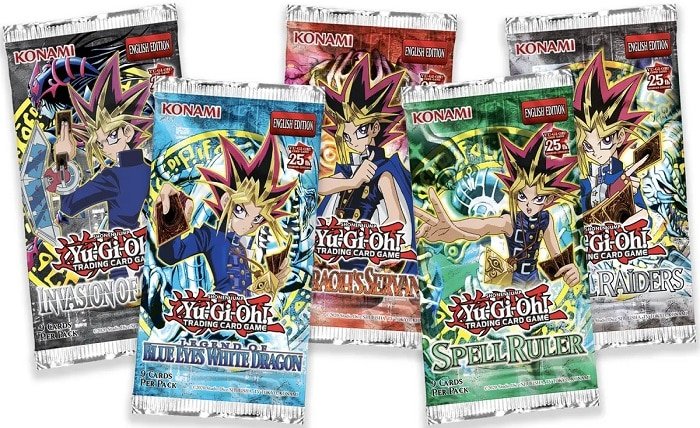
The Yu-Gi-Oh! Trading Card Game (TCG) has captivated millions with its dynamic card duels and intricate strategies. Since its debut, a myriad of card sets has been released, each introducing new cards and mechanics. Understanding the evolution and order of Yu-Gi-Oh! TCG sets is crucial for both newcomers and seasoned players aiming to master the game or collect its vast array of cards.
The Birth of Yu-Gi-Oh! TCG: The Early Sets
The journey of Yu-Gi-Oh! TCG sets began in 1999 in Japan, with the international release following in 2002. The initial sets, including the legendary “Legend of Blue-Eyes White Dragon,” laid the foundational mechanics that would define the game. These early sets introduced iconic cards like “Blue-Eyes White Dragon” and “Dark Magician,” which remain popular today.
Rise of the Duelists: Expanding the Game
Following the early releases, Yu-Gi-Oh! TCG sets started to introduce more complex cards and mechanics. “Metal Raiders” and “Spell Ruler” not only expanded the card pool but also introduced new types of cards, such as Trap Cards and the first Ritual Monster Cards, enhancing the strategic depth of the game.
The Introduction of Archetypes
By the early 2000s, Yu-Gi-Oh! TCG sets began to focus on archetypes—groups of cards with similar effects designed to work together. This era saw the introduction of archetypes like “Blackwings” and “Lightsworns,” which have shaped competitive play. Sets like “The Lost Millennium” and “Soul of the Duelist” were pivotal in this shift.
GX Era: A New Generation of Dueling
With the launch of the “Yu-Gi-Oh! GX” television series, the TCG entered the GX Era. This period featured sets like “Elemental Energy” and “Shadow of Infinity,” focusing on new heroes and their signature cards. Fusion Monsters gained prominence, offering players novel ways to summon powerful creatures.
The Synchro Summoning Revolution
The introduction of Synchro Monsters in sets starting from “The Duelist Genesis” marked a significant evolution in gameplay strategy. This mechanic allowed players to combine specific tuner and non-tuner monsters to summon even more powerful allies from the Extra Deck.
XYZ Monsters and the ZeXal Era
As the game progressed into the “Yu-Gi-Oh! Zexal” series, XYZ Monsters debuted in sets like “Generation Force.” These monsters brought a new dimension to the game, utilizing overlay units and providing players with accessible yet powerful options.
Pendulum Monsters Shake the Meta
The “Yu-Gi-Oh! Arc-V” series introduced Pendulum Monsters, a hybrid between monster and spell cards. Sets like “Duelist Alliance” were instrumental in integrating this innovative mechanic, which allowed for repetitive summons and dynamic duels.
Link Monsters and New Strategies
The “Yu-Gi-Oh! VRAINS” series brought about Link Monsters, changing the landscape of the game board by dictating how players could summon monsters from the Extra Deck. Sets such as “Code of the Duelist” highlighted these changes, pushing players to explore new strategies and deck builds.
Recent Yu-Gi-Oh! TCG Sets and Current Trends
The latest Yu-Gi-Oh! TCG sets, including “Rise of the Duelist” and “Phantom Rage,” continue to introduce groundbreaking cards and themes. These sets reflect the ongoing evolution of the game, embracing both legacy elements and new innovations to keep the gameplay fresh and exciting.
How Yu-Gi-Oh! TCG Sets Influence Competitive Play
Yu-Gi-Oh! TCG sets not only expand the card pool but also directly influence the competitive meta. Each release potentially shifts the balance of power, with new cards often creating or countering dominant strategies. Players must adapt quickly to stay ahead in tournaments and competitive play.
Collecting Yu-Gi-Oh! TCG Sets: A Hobby Beyond Gaming
Collecting Yu-Gi-Oh! TCG sets has become a hobby in its own right, with rare cards from early sets appreciating in value. The art and lore behind the cards, coupled with their scarcity, make them highly sought after by collectors worldwide.
Conclusion
The chronological release of Yu-Gi-Oh! TCG sets has not only expanded the universe of Yu-Gi-Oh! but also continuously revolutionized its gameplay. Each set brings something new, whether it’s an innovative mechanic, a beloved archetype, or powerful standalone cards. Understanding the order and impact of these sets is essential for anyone engaged in the world of Yu-Gi-Oh! TCG, be it through competitive play, casual games, or collection.
FAQs
1.What was the first Yu-Gi-Oh! TCG set?
The first Yu-Gi-Oh! TCG set released was “Legend of Blue-Eyes White Dragon,” which debuted in Japan in 1999 and internationally in 2002.
2.How do new Yu-Gi-Oh! TCG sets affect the game?
New sets can introduce powerful cards and mechanics that reshape competitive strategies and influence the meta. They are crucial for keeping the game dynamic and balanced.
3.Can I play Yu-Gi-Oh! TCG without the latest sets?
While you can play with older cards, engaging with the latest sets is recommended to stay competitive and enjoy the full scope of new strategies and mechanics.
4.What is the best way to collect Yu-Gi-Oh! TCG sets?
Start by purchasing booster packs, boxes, or special editions associated with specific sets. For older or rarer cards, consider buying from reputable secondary markets or trading with other collectors.
5.How often are new Yu-Gi-Oh! TCG sets released?
Typically, new Yu-Gi-Oh! TCG sets are released every three to four months, with occasional special editions and promotional sets appearing in between these intervals.





